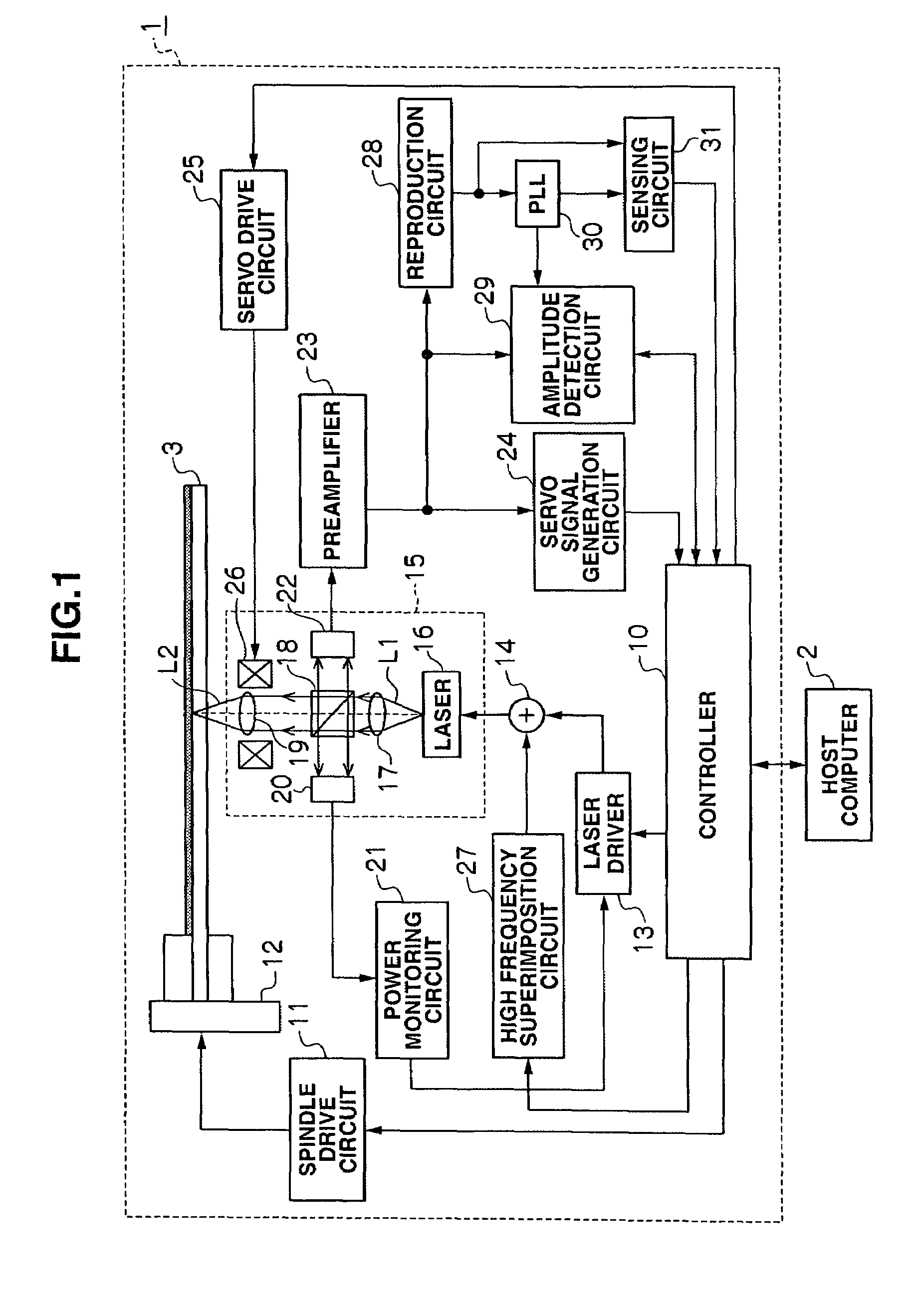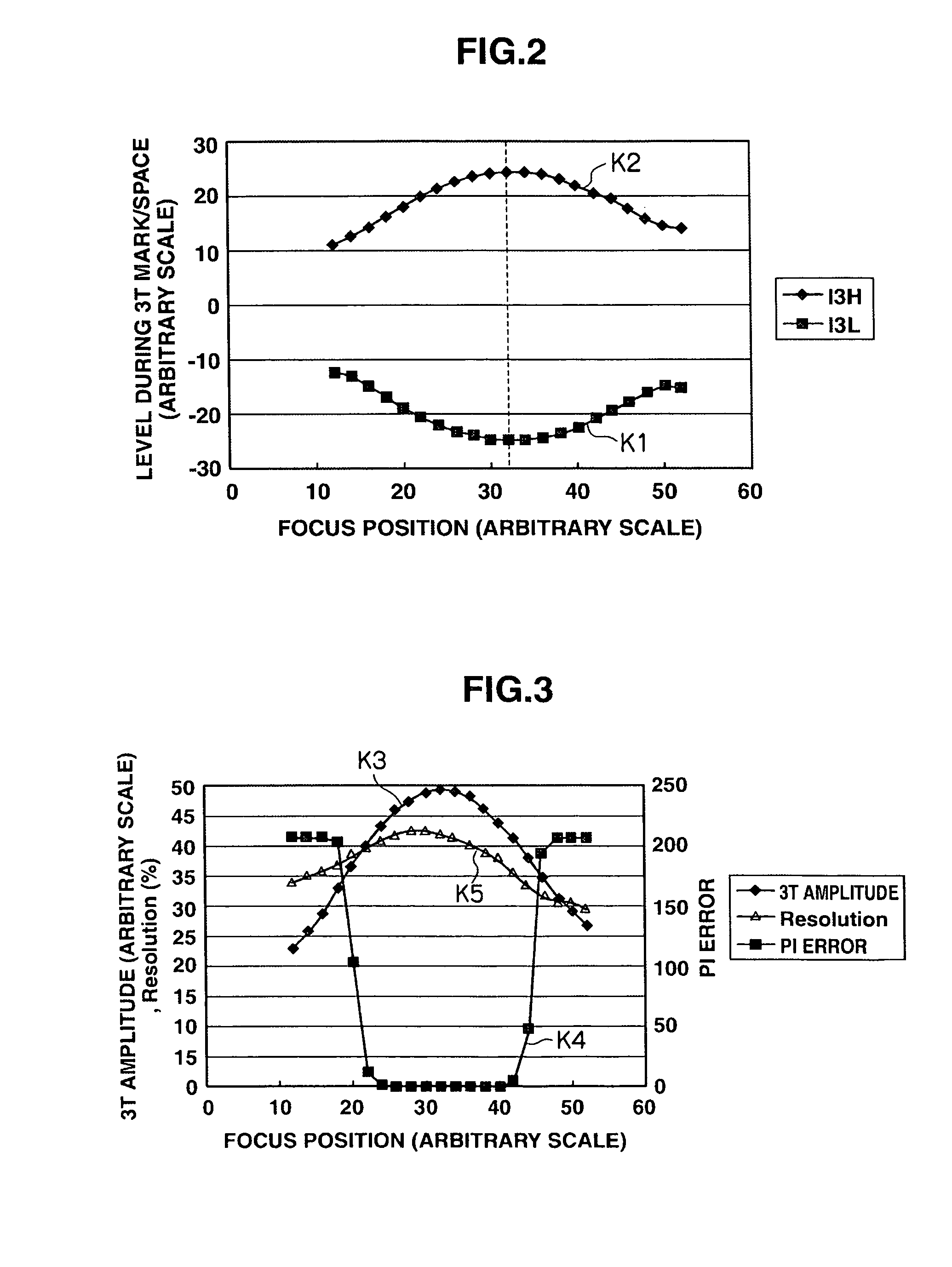Optical disk device and control method for the same
a control method and optical disk technology, applied in the direction of digital signal error detection/correction, instruments, recording signal processing, etc., can solve the problems of inability to correct the reading of data recorded on the optical disk, the optical power variation, and the mark edge recording, etc., to achieve high reliability and high-quality reproduction of the signal
- Summary
- Abstract
- Description
- Claims
- Application Information
AI Technical Summary
Benefits of technology
Problems solved by technology
Method used
Image
Examples
embodiment 1
(1) Embodiment 1
(1-1) Configuration of Optical Disk Device According to Embodiment 1
[0032]In FIG. 1, reference numeral 1 indicates an optical disk device according to Embodiment 1. This optical disk device 1 is configured so that it can record / reproduce data on an optical disk 3 such as a DVD in response to a request from a host computer 2.
[0033]In the optical disk device 1, various commands from the host computer 2 are sent to a controller 10. The controller 10 is composed of a microcomputer including a CPU (Central Processing Unit) and an internal memory storing various control programs, and executes necessary controls and calculations in response to commands from the host computer 2 or based on various information provided from various circuits inside the optical disk device 1.
[0034]The procedure performed when the controller 10 receives a record command from the host computer 2 will be described below. When the controller 10 receives a record command from the host computer 2, it...
embodiment 2
(2) Embodiment 2
(2-1) Principle
[0072]The optimum focus position learning in Embodiment 1 is performed where the reproduction circuit system has no AGC (Auto Gain Controller) circuit that maintains the amplitude of the RF signal constant.
[0073]Where the reproduction circuit system does not include an AGC circuit, the level of the RF signal is likely to change due to noise and so it is hard to obtain good reproduction data. Accordingly, in order to obtain a good quality reproduction signal, it is preferable that the reproduction circuit system has an AGC circuit.
[0074]However, when an AGC circuit is provided in the reproduction circuit, AGC processing performed by the AGC circuit reduces the variations due to defocus in the amplitude of the RF signal. Therefore, when reproducing the minimum-length recording marks repeatedly formed on the optical disk 3 by changing the focus position in the same manner as in FIG. 2, neither the level of the RF signal during the period corresponding to ...
PUM
| Property | Measurement | Unit |
|---|---|---|
| length | aaaaa | aaaaa |
| length | aaaaa | aaaaa |
| length | aaaaa | aaaaa |
Abstract
Description
Claims
Application Information
 Login to View More
Login to View More - R&D
- Intellectual Property
- Life Sciences
- Materials
- Tech Scout
- Unparalleled Data Quality
- Higher Quality Content
- 60% Fewer Hallucinations
Browse by: Latest US Patents, China's latest patents, Technical Efficacy Thesaurus, Application Domain, Technology Topic, Popular Technical Reports.
© 2025 PatSnap. All rights reserved.Legal|Privacy policy|Modern Slavery Act Transparency Statement|Sitemap|About US| Contact US: help@patsnap.com



